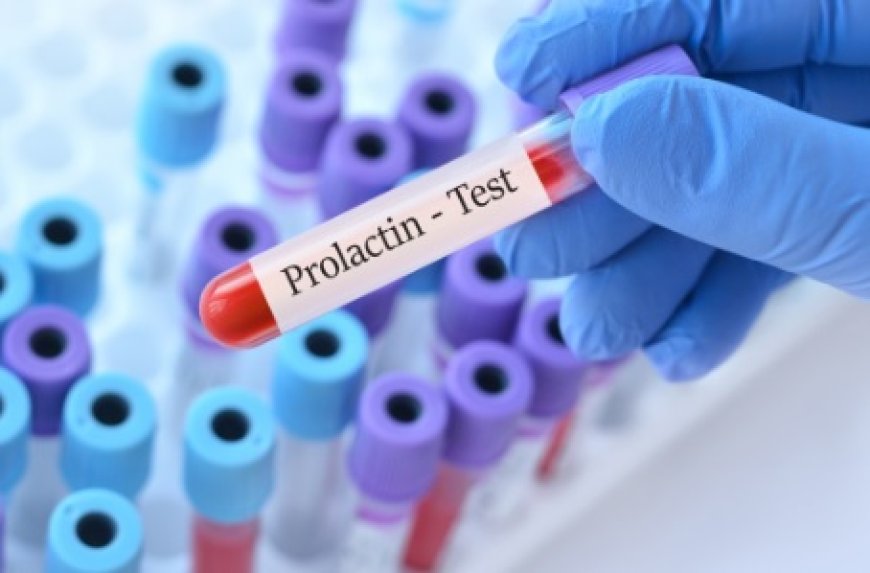A Step-by-Step Guide to Treating High Prolactin with Cabgolin

High prolactin levels, also known as hyperprolactinemia, can cause a range of health issues, from reproductive problems to metabolic disturbances. One of the most effective treatments for this condition is Cabgolin (cabergoline). This article provides a comprehensive guide to understanding and treating high prolactin levels with Cabgolin.
Understanding High Prolactin Levels
Prolactin is a hormone produced by the pituitary gland, playing a crucial role in lactation and fertility. Elevated prolactin levels can lead to symptoms such as irregular menstrual cycles in women, erectile dysfunction in men, and infertility in both sexes. Other symptoms may include galactorrhea (unexpected milk production), headaches, and vision problems.
Causes of Hyperprolactinemia
There are several potential causes of elevated prolactin levels, including:
- Pituitary tumors (prolactinomas)
- Hypothyroidism
- Medications (e.g., antipsychotics, antidepressants)
- Stress
- Chest trauma or surgery
Understanding the underlying cause is essential for determining the most effective treatment approach.
Cabgolin: A Potent Treatment for High Prolactin
Cabgolin, a dopamine agonist, is widely used to treat hyperprolactinemia. It works by binding to dopamine receptors in the pituitary gland, inhibiting prolactin secretion.
Cabgolin 0.25mg is a kind of dopamine agonist. Treatment for elevated prolactin levels involves its use. In situations of stillbirth, abortion, or miscarriage, it is also useful in halting the production of breast milk.
How Cabgolin Works
Cabgolin mimics the action of dopamine, a neurotransmitter that naturally inhibits prolactin release. By enhancing dopamine activity, Cabgolin reduces prolactin levels effectively and swiftly.
Benefits of Cabgolin
- High efficacy: Rapid reduction in prolactin levels
- Convenience: Typically taken once or twice a week
- Fewer side effects: Compared to other treatments like bromocriptine
- Improved symptoms: Restoration of normal menstrual cycles, improved fertility, and reduction in galactorrhea
Step-by-Step Guide to Treating High Prolactin with Cabgolin
1. Diagnosis and Consultation
The first step in treating high prolactin levels is obtaining a proper diagnosis. This involves:
- Blood tests: To measure prolactin levels
- MRI scans: To detect pituitary tumors
- Thyroid function tests: To rule out hypothyroidism
Consult an endocrinologist or a healthcare provider specialized in hormonal disorders. Discuss your symptoms, medical history, and any medications you're currently taking.
2. Prescribing Cabgolin
Once hyperprolactinemia is confirmed, your doctor will prescribe Cabgolin. The typical starting dose is 0.25 mg twice a week, which may be adjusted based on your response and prolactin levels.
3. Monitoring and Adjusting Dosage
Cabergoline 0.5mg is used to treat a variety of illnesses that arise from excessive production of the hormone prolactin. It can be used to treat pituitary prolactinomas, which are tumors of the pituitary gland, as well as some menstruation issues and issues with fertility in both sexes.
Regular monitoring is crucial to ensure the effectiveness of the treatment and to adjust the dosage as needed. This includes:
- Follow-up blood tests: To track prolactin levels
- Periodic MRI scans: If a pituitary tumor is present
- Symptom assessment: To gauge improvements and detect side effects
4. Managing Side Effects
Cabgolin is generally well-tolerated, but some patients may experience side effects, such as:
- Nausea
- Headaches
- Dizziness
- Fatigue
To minimize side effects, take Cabgolin with food and start with a lower dose, gradually increasing as tolerated. Report any severe or persistent side effects to your doctor promptly.
5. Long-term Management
Treatment duration varies depending on the underlying cause and response to therapy. Some patients may need to take Cabgolin long-term, while others can taper off the medication after prolactin levels normalize. Regular follow-ups with your healthcare provider are essential to determine the best course of action.
6. Lifestyle and Supportive Measures
In addition to medication, certain lifestyle changes can support treatment and overall health:
- Stress management: Practices like yoga, meditation, and mindfulness
- Balanced diet: Rich in nutrients that support hormonal balance
- Regular exercise: To maintain a healthy weight and reduce stress
- Adequate sleep: Essential for hormonal regulation
Potential Complications and When to Seek Help
While Cabgolin is effective, it's crucial to be aware of potential complications. These may include:
- Cardiac valve issues: Rare but serious, requiring periodic echocardiograms
- Psychiatric symptoms: Such as depression or impulsive behaviors
- Worsening of symptoms: Indicating possible resistance to the medication
Seek immediate medical attention if you experience severe side effects, significant mood changes, or any new or worsening symptoms.
Conclusion
Treating high prolactin levels with Cabgolin is a well-established and effective approach. By following a structured treatment plan that includes regular monitoring, dosage adjustments, and lifestyle changes, patients can achieve significant improvements in their symptoms and overall quality of life. Always consult with a healthcare provider to tailor the treatment to your specific needs and circumstances.
What's Your Reaction?
 Like
0
Like
0
 Dislike
0
Dislike
0
 Love
0
Love
0
 Funny
0
Funny
0
 Angry
0
Angry
0
 Sad
0
Sad
0
 Wow
0
Wow
0






















































